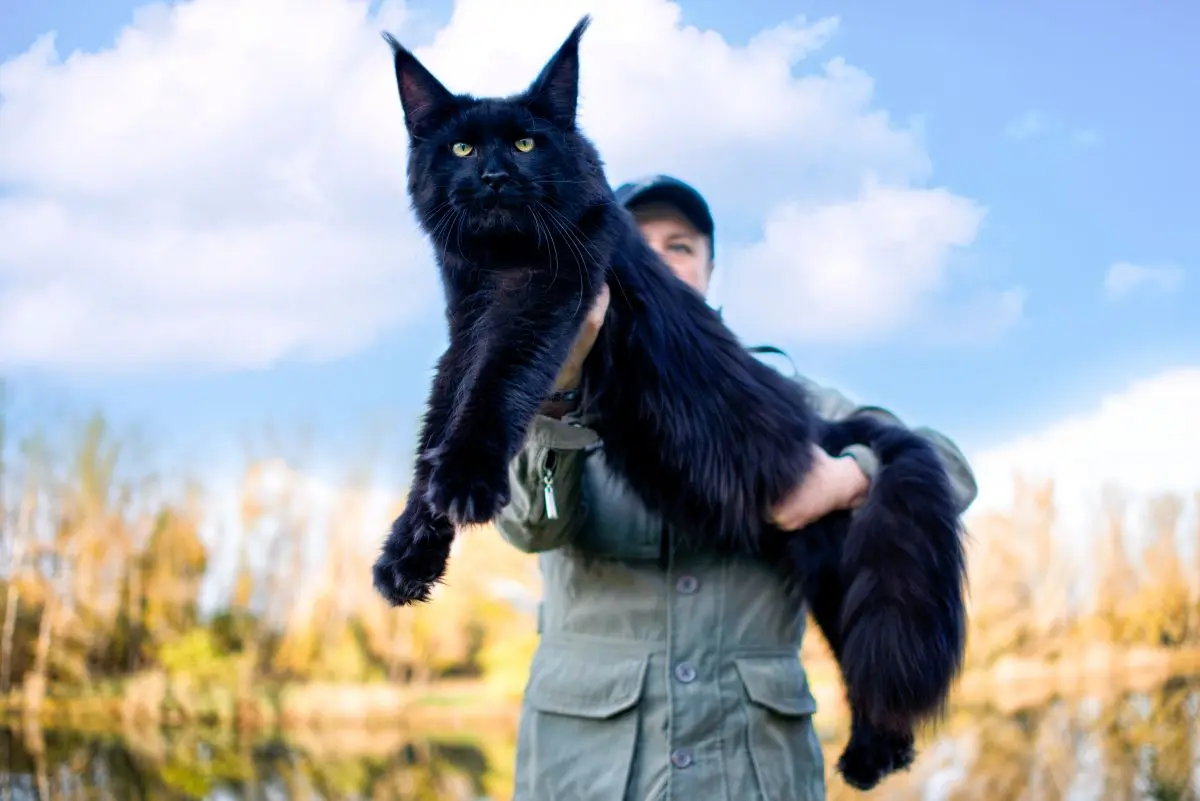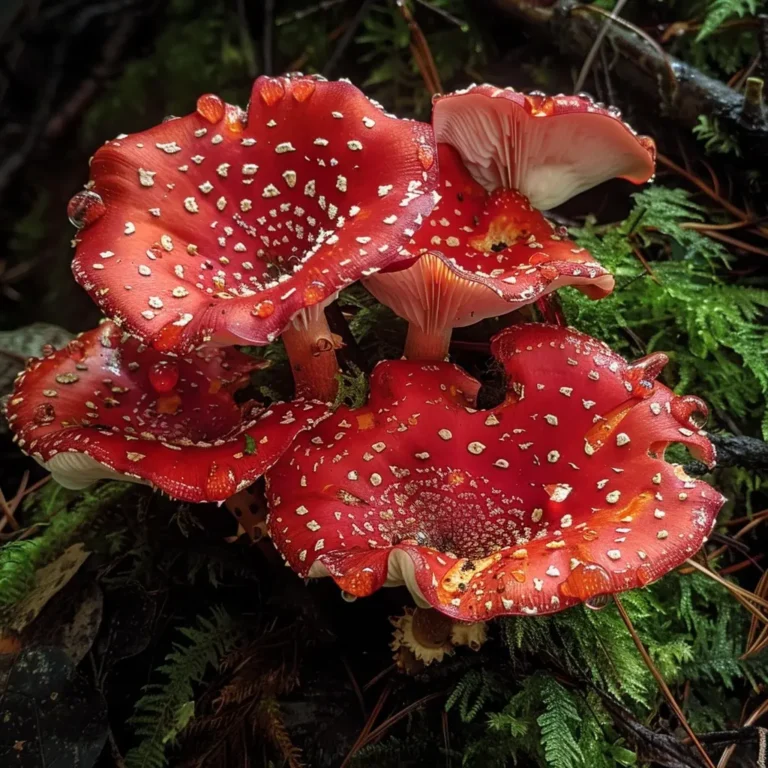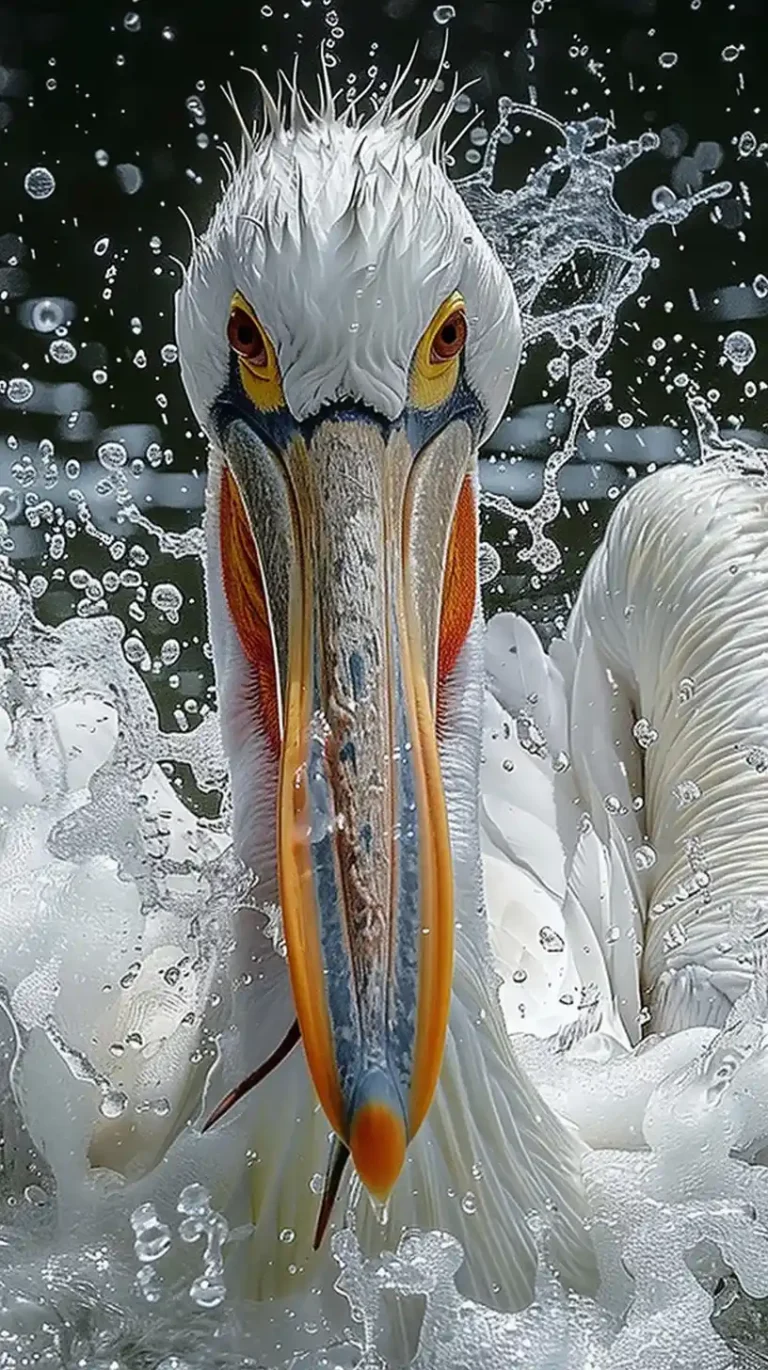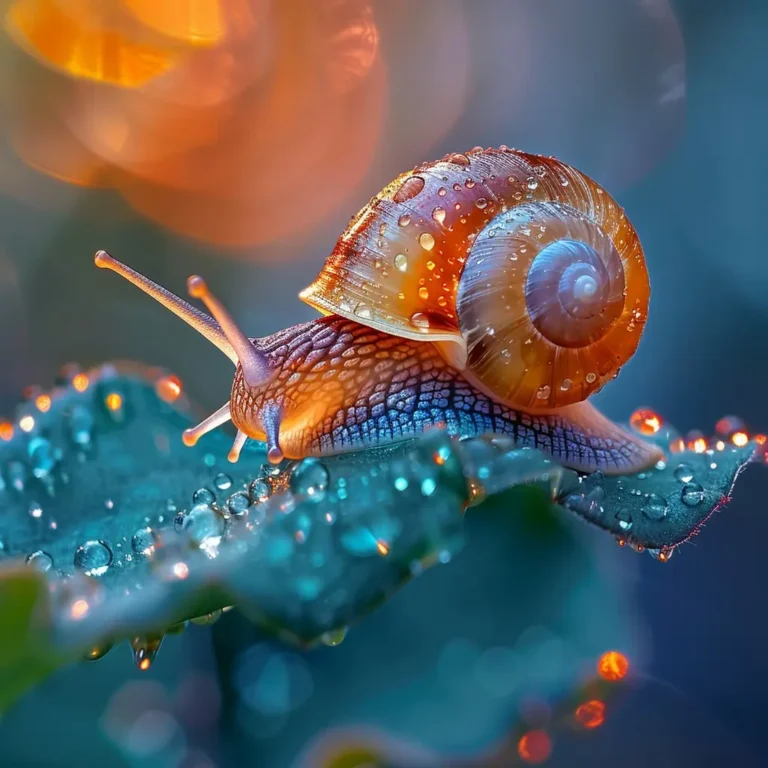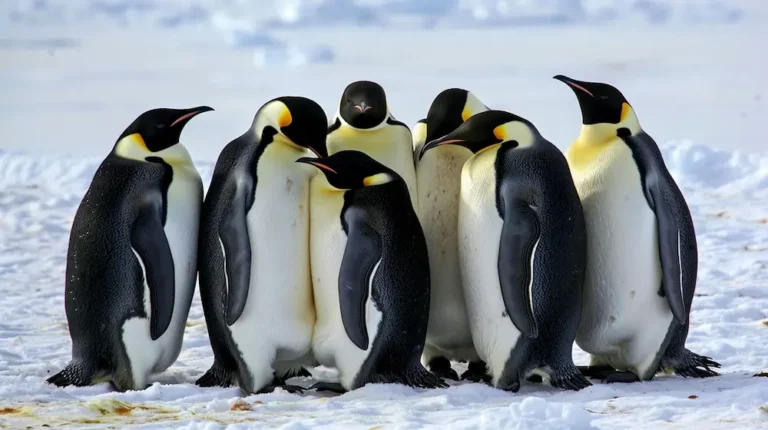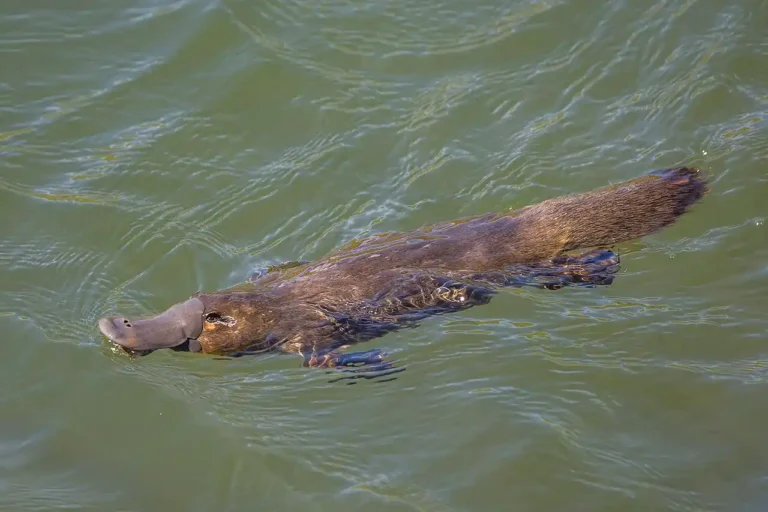Cats have fascinated and delighted humans for thousands of years with their mysterious and graceful behaviors. Here are 100 amazing facts about our feline friends, complete with details and explanations.
Stay sharp and foster your brain health with our Trivia game generator or Fun Facts game for you mental exercises and mental sharpness!
1. Cats have five toes on their front paws but only four toes on their back paws.
- Details: This difference in toe count is a common trait in domestic cats and many wild species. The front paws have additional toes for better grip and climbing ability. Some breeds, like the Polydactyl cat, can have extra toes on both front and back paws.
2. A cat’s nose is unique, much like a human fingerprint. Each cat’s nose print is different.
- Details: The nose print of a cat has a unique pattern of ridges and bumps, which can be used to identify them, much like human fingerprints. This characteristic is used in some cat identification systems.
3. Cats have a special reflective layer behind their retinas called the tapetum lucidum, which helps them see in low light.
- Details: The tapetum lucidum reflects light that passes through the retina back into the eye, improving night vision. This feature is common in many nocturnal animals and gives cats their characteristic eye shine in the dark.
4. The world’s oldest cat lived to be 38 years and 3 days old, named Creme Puff.
- Details: Creme Puff, born in 1967 and passing away in 2005, holds the record for the oldest cat. Her longevity is attributed to a combination of genetics, diet, and care.
5. Cats can rotate their ears 180 degrees and move them independently to locate sounds.
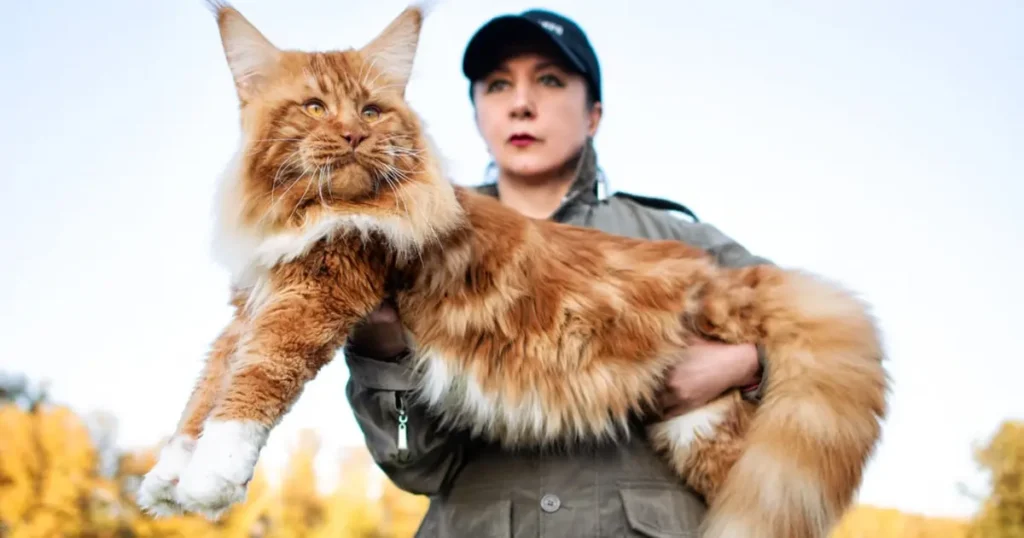
- Details: This ability allows cats to hear a wide range of frequencies and pinpoint the exact location of a sound. Their ear muscles are highly developed, enabling precise auditory control.
6. A cat’s whiskers are roughly as wide as its body, helping it navigate through tight spaces.
- Details: Whiskers are highly sensitive and help cats gauge whether they can fit through an opening. They provide crucial sensory input about the environment and potential obstacles.
7. Cats sleep for 70% of their lives, making them one of the sleepiest animals.
- Details: Cats’ extensive sleep time is related to their predatory nature. They need to conserve energy for hunting, and as domestic pets, they retain this instinctual behavior.
8. The average cat runs at a speed of 30 miles per hour.
- Details: Cats are built for speed with powerful muscles and flexible bodies. This speed helps them catch prey in the wild and escape from potential threats.
9. Cats have over 100 different vocal sounds, while dogs have around 10.
- Details: Cats use a variety of vocalizations to communicate, including meows, purrs, and chirps. Each sound has different meanings, from greeting to signaling distress.
10. The largest breed of domestic cat is the Maine Coon, which can weigh up to 25 pounds.
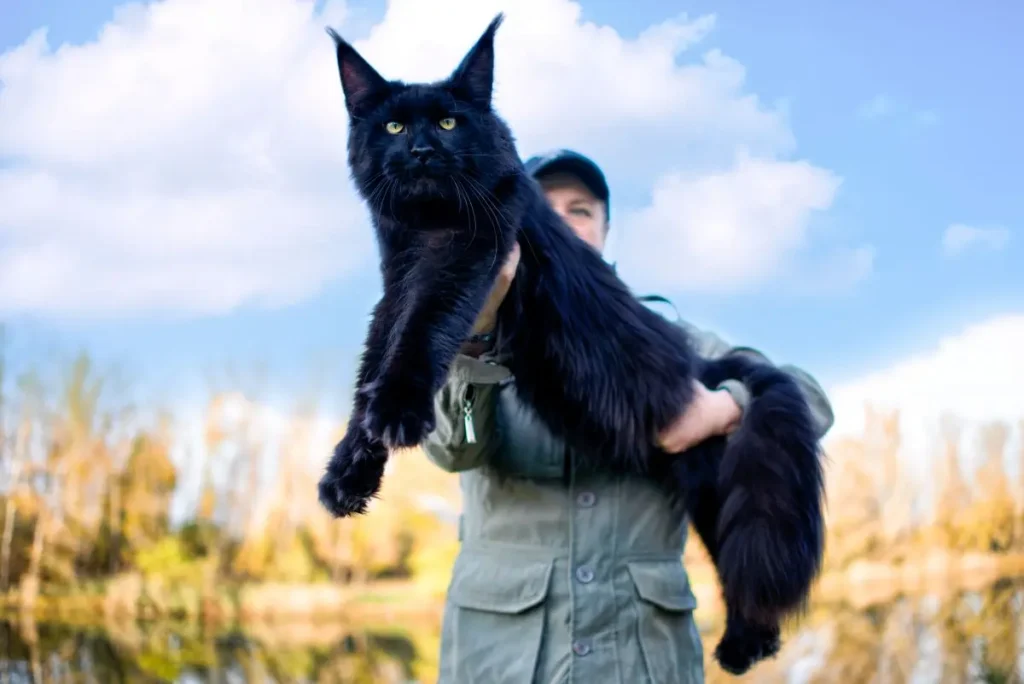
- Details: Maine Coons are known for their large size, tufted ears, and friendly nature. They originated in the United States and are often referred to as “gentle giants.”
11. A cat’s purring frequency ranges between 25 and 150 Hertz, which is thought to be therapeutic.
- Details: The purring of cats is believed to have healing properties for both cats and humans. Studies suggest that the vibrations can promote bone growth and healing.
12. Ancient Egyptians worshipped cats and even mummified them to be buried with their owners.
- Details: Cats were revered in ancient Egyptian culture, associated with the goddess Bastet. They were often mummified and buried with their owners as symbols of protection and prosperity.
13. A cat’s sense of smell is 14 times better than that of humans.
- Details: Cats have a highly developed olfactory system with around 50 to 80 million scent receptors, compared to 5 million in humans. This keen sense helps them detect food and pheromones.
14. Cats can make themselves appear larger by puffing up their fur and arching their backs.
- Details: This defensive posture makes the cat look more intimidating to predators or rivals. It is a natural response to threats, known as “piloerection.”
15. There are more than 70 million feral cats in the United States alone.
- Details: Feral cats live in outdoor environments and are not socialized to humans. They form colonies and are often part of Trap-Neuter-Return (TNR) programs to control their population.
16. Cats can jump up to six times their body length in a single leap.
- Details: Cats’ powerful leg muscles and flexible spine allow them to perform incredible jumps. This ability is useful for climbing and hunting in the wild.
17. A cat’s brain is 90% similar to a human’s brain, particularly in the areas that control emotions.
- Details: Cats and humans share similar brain structures, including those involved in emotion and memory. This similarity helps explain the strong bonds between cats and their owners.
18. The world’s first cloned cat was named CC (Carbon Copy), born in 2001.
- Details: CC was the first cat to be cloned from an adult cell, marking a significant milestone in genetic research. The cloning process used cells from a calico cat.
19. Cats have specialized collarbones that allow them to always land on their feet when they fall.
- Details: The collarbones, or clavicles, are free-floating and connected to the cat’s shoulder blades. This unique structure helps cats twist their bodies mid-air to land on their feet.
20. The Turkish Van is known as the “swimming cat” because it loves water and is an excellent swimmer.
- Details: The Turkish Van breed has a water-resistant coat and is known for its affinity for swimming, unlike most other domestic cats. This trait is thought to originate from their native region in Turkey.
21. Each cat has a unique pattern of ridges and bumps on its nose, similar to human fingerprints.
- Details: Just like human fingerprints, no two cats have the same nose print. This uniqueness makes it possible to identify individual cats by their nose patterns.
22. Cats have retractable claws that they use for climbing, hunting, and self-defense.
- Details: Retractable claws allow cats to keep their claws sharp and hidden when not in use. This adaptation is crucial for climbing, capturing prey, and defending themselves.
23. The average cat has about 24 whiskers on each side of its face.
- Details: Whiskers, or vibrissae, are used to detect changes in the environment and navigate in the dark. They are highly sensitive and help cats gauge their surroundings.
24. A cat’s tail helps with balance, especially when climbing or making sudden jumps.
- Details: The tail acts as a counterbalance for the cat, aiding in its agility and stability. It is particularly important for climbing and quick directional changes.
25. The Somali cat is known for its unique, wild appearance, resembling a small cougar.
- Details: The Somali is a breed with a ticked coat that gives it a wild look. It is a descendant of the Abyssinian breed and is known for its playful and energetic nature.
26. Cats have been domesticated for about 4,000 years, though they were revered in ancient Egypt as early as 3,000 BC.

- Details: The domestication of cats began when they started living near human settlements, helping control rodent populations. Their reverence in ancient Egypt is evident from historical artifacts and texts.
27. A cat’s sense of hearing is more than twice as acute as a human’s.
- Details: Cats can hear frequencies up to 64,000 Hertz, compared to humans’ 20,000 Hertz. This acute hearing helps them detect high-pitched sounds made by small prey.
28. Unlike dogs, cats don’t have a “home base” mentality and are often more independent.
- Details: Cats are solitary hunters by nature and often do not form packs like dogs. They are more likely to explore and be independent, though they can form strong bonds with humans.
29. The “catnip” plant contains a compound called nepetalactone, which induces a euphoric reaction in many cats.
- Details: Nepetalactone affects the olfactory system and causes a temporary state of euphoria in many cats. Not all cats are affected, and sensitivity to catnip is hereditary.
30. Cats use their whiskers to gauge whether they can fit through a space.
- Details: Whiskers help cats assess whether they can squeeze through tight spots. The length of the whiskers is typically about the width of the cat’s body, aiding in spatial awareness.
31. The average cat’s heart beats between 140 and 220 times per minute.
- Details: Cats have a high heart rate compared to humans, which supports their fast metabolism and energy levels. A cat’s heart rate can vary based on activity and health.
32. Some cats have a polydactyl trait, meaning they have extra toes on their paws.
- Details: Polydactylism is a genetic mutation that results in cats having extra toes. This trait is more common in certain breeds and can provide better grip and balance.
33. The Calico cat is often female, with fewer than 1 in 3,000 Calico cats being male.
- Details: The Calico coloration is linked to the X chromosome. Since female cats have two X chromosomes, they are more likely to exhibit this color pattern. Male Calicos are rare and usually sterile.
34. Cats can rotate their heads 180 degrees to keep an eye on their surroundings.
- Details: Cats’ necks are highly flexible, allowing them to rotate their heads to observe their environment without moving their bodies. This adaptation helps them stay aware of potential threats.
35. The Bombay breed is known for its striking, black coat and golden eyes, giving it a panther-like appearance.
- Details: The Bombay is a breed created by crossing the Burmese with the black American Shorthair. Its sleek black coat and copper or gold eyes give it a distinctive, elegant look.
36. A cat’s top speed in a sprint is around 30 miles per hour.
- Details: Cats’ speed is due to their powerful leg muscles and flexible spines. This speed allows them to quickly catch prey or escape from danger.
37. Many cats can make themselves look twice their size to intimidate predators or rivals.
- Details: By puffing up their fur and arching their backs, cats can appear larger and more intimidating. This behavior is a defensive mechanism to deter threats.
38. The Sphinx cat is known for its lack of fur and distinctive wrinkled skin.
- Details: The Sphynx is a breed that originated due to a natural mutation that causes hairlessness. Its wrinkled skin and large ears give it a unique appearance, and it requires regular skin care to remove oils.
39. Cats can dream just like humans, showing rapid eye movement (REM) sleep.
- Details: Cats experience REM sleep, which is associated with dreaming. During this stage, their brain activity is similar to humans, and they may exhibit movements or sounds associated with dreams.
40. The longest whiskers ever recorded on a cat were over 7 inches long.
- Details: Long whiskers are rare and can be a breed-specific trait or result from genetic variations. Whiskers of this length provide enhanced sensory input.
41. A cat’s eyes have a third eyelid called a nictitating membrane, which helps protect their eyes.
- Details: The nictitating membrane is a translucent eyelid that moves diagonally across the eye. It helps protect and lubricate the eye, particularly when the cat is hunting or sleeping.
42. Cats have a specialized gland in their mouths that produces a substance called “Felis odor,” which helps mark their territory.
- Details: Felis odor is a pheromone that cats use to mark their territory and communicate with other cats. They deposit this scent by rubbing their face against objects.
43. The Ragdoll breed is known for its relaxed temperament and tendency to go limp when picked up.
- Details: Ragdolls are known for their docile and affectionate nature. They often go limp when picked up, which is where the breed’s name comes from.
44. Cats have a special grooming routine that involves licking their fur to keep it clean and free of parasites.
- Details: Grooming is crucial for a cat’s health. It helps remove loose fur, dirt, and parasites, and also strengthens the bond between cats and their owners.
45. The average cat has around 30 teeth, which they use for various functions including grooming and eating.
- Details: Cats have 16 teeth on the top jaw and 14 on the bottom. Their sharp teeth are adapted for gripping and tearing meat, and are essential for their predatory behavior.
46. The Abyssinian cat is one of the oldest known cat breeds and resembles ancient Egyptian cats.
- Details: The Abyssinian is believed to have origins in ancient Egypt, where they were revered for their striking appearance and agility. They have a distinctive ticked coat and a playful personality.
47. A cat’s nose is very sensitive and can detect pheromones, which are chemicals that help them communicate.
- Details: Cats use their sense of smell to detect pheromones, which convey information about other cats’ identities, reproductive status, and territorial boundaries.
48. The Maine Coon is often referred to as the “gentle giant” due to its friendly and affectionate nature.
- Details: Maine Coons are known for their large size, tufted ears, and sociable temperament. They are often good with children and other pets, earning them the nickname “gentle giants.”
49. Cats can distinguish between different pitches and tones in human voices.
- Details: Cats have a highly developed sense of hearing that allows them to recognize different vocal tones and pitches. They can differentiate between their owner’s voice and others.
50. The Manx breed is known for its taillessness or very short tail, a genetic trait.
- Details: Manx cats have a genetic mutation that results in varying degrees of tail length, from fully tailless to a short stub. This trait is accompanied by a distinctive rounded appearance.
51. A cat’s whiskers are highly sensitive and can pick up vibrations and changes in their environment.
- Details: Whiskers are equipped with nerve endings that make them extremely sensitive to touch and vibrations. This sensitivity helps cats detect nearby objects and navigate in the dark.
52. The Cornish Rex cat has a distinctive curly coat due to a genetic mutation.
- Details: The Cornish Rex breed has a unique coat texture caused by a genetic mutation. Its fur is soft, curly, and requires minimal grooming compared to other breeds.
53. Cats have been known to “knead” their owners, a behavior that stems from kittenhood when they knead their mother’s belly to stimulate milk flow.
- Details: Kneading is a comforting behavior for cats that originates from their time as kittens. It’s a way for them to express affection and mark their territory.
54. The Scottish Fold breed is known for its unique folded ears, which are caused by a genetic mutation.
- Details: Scottish Folds have a genetic mutation that causes their ears to fold forward. This breed is known for its sweet disposition and distinctive appearance.
55. Cats have a specialized grooming tool built into their tongues—tiny, hook-like structures called papillae that help remove loose fur and dirt.
- Details: The papillae on a cat’s tongue are made of keratin and have a rough texture. They help cats clean their fur and stimulate blood flow in the skin.
56. The Russian Blue breed has a beautiful, silvery-blue coat and striking green eyes.
- Details: Russian Blues are known for their dense, double-layered coat that appears blue-gray in color. They are also noted for their vibrant green eyes and gentle temperament.
57. A cat’s purring can help lower human stress and anxiety levels, acting as a calming mechanism.
- Details: Studies suggest that the frequency of a cat’s purring can have a calming effect on humans, potentially reducing stress and promoting relaxation.
58. The Persian cat is known for its long, luxurious coat and distinctive flat face.
- Details: Persians have a long, flowing coat and a brachycephalic face with a flat nose. They are known for their calm and affectionate nature but require regular grooming.
59. Cats use a unique form of communication called “chirrups” or “trills” to interact with their owners and other cats.
- Details: Chirrups and trills are vocalizations that cats use to communicate. They are often used as a greeting or to gain attention, differing from the more common meows.
60. The Norwegian Forest cat is a large, robust breed with a thick, water-resistant coat, adapted for cold climates.
- Details: Norwegian Forest cats have a dense, double-layered coat that protects them from harsh weather conditions. They are known for their strength and friendly nature.
61. The Tonkinese breed is known for its playful and social nature, making it a popular choice for families.
- Details: Tonkinese cats are a mix of Burmese and Siamese breeds, resulting in a playful and sociable personality. They thrive in interactive environments and enjoy being part of family activities.
62. A cat’s sense of taste is less developed than that of humans; they have fewer taste buds and cannot taste sweetness.
- Details: Cats have approximately 470 taste buds compared to humans’ 9,000. Their inability to taste sweetness reflects their dietary needs as obligate carnivores.
63. The Devon Rex breed has large ears and a wavy coat, making it stand out from other cat breeds.
- Details: The Devon Rex has a distinctive appearance with its large, bat-like ears and soft, curly fur. The breed is known for its playful and affectionate personality.
64. Cats have a “Jacobson’s organ” located on the roof of their mouth, which helps them analyze scents.
- Details: Jacobson’s organ, or the vomeronasal organ, helps cats detect pheromones and other chemical signals. It is a key part of their sensory system.
65. The Bengal cat has a distinctive, wild-looking coat with spots and marbling, resembling a leopard.
- Details: Bengal cats are bred to resemble wild felines, such as leopards, with their spotted or marbled coats. Despite their appearance, they are fully domestic and known for their energetic personalities.
66. Cats have a special “love bite” behavior where they gently nibble on their owners as a sign of affection.
- Details: A “love bite” is a gentle nibbling or biting that cats use to show affection. It is a behavior learned from kittenhood and is usually harmless.
67. The Selkirk Rex breed is known for its curly coat and round face, often referred to as the “cat in sheep’s clothing.”
- Details: The Selkirk Rex has a curly coat due to a genetic mutation, giving it a woolly appearance. It is known for its friendly and easygoing temperament.
68. Cats have a specialized grooming behavior called “allogrooming,” where they groom each other to strengthen social bonds.
- Details: Allogrooming is a social behavior in which cats groom each other. This practice helps strengthen relationships and maintain cleanliness within a group.
69. The Egyptian Mau is one of the few naturally spotted breeds of domestic cats, with a unique appearance.
- Details: The Egyptian Mau is one of the few naturally spotted cat breeds, known for its distinctive spots and elegant appearance. It is also one of the oldest cat breeds.
70. A cat’s “third eyelid” or nictitating membrane helps protect and clean their eyes.
- Details: The nictitating membrane is a transparent eyelid that moves across the eye to protect and moisten it. It helps maintain eye health and remove debris.
71. Cats have an incredible sense of hearing and can detect ultrasonic sounds made by small prey.
- Details: Cats can hear sounds up to 64,000 Hertz, which is far beyond the range of human hearing. This ability helps them detect high-frequency sounds made by rodents.
72. The Japanese Bobtail is known for its “bobbed” tail, which resembles a pom-pom or bunny tail.
- Details: The Japanese Bobtail has a short, stubby tail that is often compared to a pom-pom. This breed is also known for its playful and friendly nature.
73. Cats can make a variety of purring sounds, including those used to soothe themselves or communicate with others.
- Details: Purring serves multiple purposes, including self-soothing and communication. Cats often purr when they are content, stressed, or in pain.
74. The American Shorthair breed is known for its sturdy build and short, dense coat, making it a versatile and low-maintenance pet.
- Details: American Shorthairs are recognized for their strong, muscular build and short coat. They are easy to care for and are known for their friendly and adaptable nature.
75. The Sphynx breed is known for its lack of fur, but it requires regular bathing to remove excess oils.
- Details: The Sphynx’s lack of fur means that it can accumulate oils on its skin. Regular bathing is necessary to keep its skin clean and healthy.
76. The Abyssinian breed is known for its “ticked” coat, where each hair is banded with multiple colors.
- Details: Abyssinians have a unique ticked coat where each hair is banded with different colors. This gives them a warm, glowing appearance and is a hallmark of the breed.
77. Cats have been shown to lower blood pressure and reduce stress in their owners through their calming presence.
- Details: Interacting with cats can have therapeutic effects on humans. Their purring and presence can help reduce stress levels and lower blood pressure.
78. The Somali breed is known for its playful and active nature, resembling a small cheetah with its ticked coat.
- Details: The Somali is a close relative of the Abyssinian, with a similar ticked coat. They are known for their high energy levels and playful behavior.
79. The Singapura cat is one of the smallest cat breeds, with a distinctively short coat and large eyes.
- Details: Singapura cats are known for their petite size and large, expressive eyes. They are active and playful, with a sleek, short coat.
80. The Munchkin breed is famous for its short legs, a trait caused by a genetic mutation.
- Details: Munchkins have a genetic mutation that results in their short legs. Despite their unusual appearance, they are active and agile, able to run and jump with ease.
81. The British Shorthair is known for its round face, dense coat, and stocky build.
- Details: British Shorthairs are recognized for their robust, round face and dense coat. They are known for their calm and easygoing temperament.
82. The Turkish Angora is one of the oldest natural breeds, known for its elegant appearance and long, silky coat.
- Details: Turkish Angoras are known for their graceful appearance and long, flowing coat. They are one of the oldest natural breeds and are celebrated for their beauty and intelligence.
83. The LaPerm breed is known for its curly coat, which can range from tight ringlets to loose waves.
- Details: The LaPerm has a coat that ranges from tight curls to loose waves due to a genetic mutation. They are friendly and affectionate, with a distinctive appearance.
84. The Javanese breed is known for its sleek, slender body and vocal, playful nature.
- Details: Javanese cats have a slender, elegant build and are known for their vocal and playful personalities. They are active and enjoy interactive play with their owners.
85. The Egyptian Mau is one of the few naturally spotted breeds of domestic cats.
- Details: The Egyptian Mau has a distinctive spotted coat that is a natural trait, not the result of selective breeding. They are also known for their agility and speed.
86. Cats have been shown to have a “territorial instinct” and often mark their territory by rubbing their scent on objects.
- Details: Cats use scent marking to establish and maintain their territory. They have scent glands on their cheeks and forehead that they use to mark objects and spaces.
87. The Snowshoe breed has distinctive white markings on its paws and face, resembling snowshoes.
- Details: Snowshoes are known for their white “snowshoe” markings on their paws and face. They have a friendly and playful personality and are known for their striking appearance.
88. The Chausie breed is a hybrid of domestic cats and jungle cats, known for its wild appearance and energetic personality.
- Details: Chausies are hybrids between domestic cats and wild jungle cats. They have a striking appearance and are known for their high energy levels and playful nature.
89. Cats can often “sense” when their owners are stressed or ill and may act more affectionate during these times.
- Details: Cats are sensitive to changes in their owners’ emotions and health. They may offer extra affection or companionship when they sense their owners are stressed or unwell.
90. The Ocicat is a breed that resembles a wild ocelot but is entirely domestic and known for its playful nature.
- Details: The Ocicat has a spotted coat that resembles a wild ocelot, but it is a fully domestic breed. It is known for its friendly and active personality.
91. Cats have a unique way of drinking water: they curl their tongues backward to scoop water into their mouths.
- Details: Cats use their tongues to scoop water by curling the edges backward. They lap up water quickly and efficiently, which is a unique adaptation of their feeding behavior.
92. The American Curl breed is known for its unique, curled-back ears, giving it a distinctive appearance.
- Details: The American Curl has ears that curl backward due to a genetic mutation. This breed is known for its friendly and adaptable nature.
93. Cats have been known to form strong bonds with their owners and can experience separation anxiety.
- Details: Cats can develop strong attachments to their owners and may experience anxiety when separated. Signs of separation anxiety include excessive vocalization and changes in behavior.
94. The Serengeti breed is known for its long legs and sleek, spotted coat, resembling a wild serval.
- Details: Serengeti cats have long legs and a spotted coat that resembles the wild serval. They are known for their agility and playful nature.
95. The Peterbald breed is known for its hairless or partially hairless coat, which gives it a distinctive look.
- Details: Peterbald cats can be hairless or have a fine, peach-fuzz-like coat. They are known for their affectionate and social personalities.
96. Cats have a special “grooming behavior” called “allogrooming” where they groom each other to strengthen social bonds.
- Details: Allogrooming is a social behavior in which cats groom each other. It helps strengthen bonds within a group and keeps their fur clean.
97. The Bengal cat has a unique pattern on its coat that resembles a leopard’s spots or marbling.
- Details: Bengal cats have a coat with spots or marbling that mimics the appearance of wild leopards. They are known for their energetic and playful behavior.
98. Cats can make themselves nearly invisible by blending into their surroundings with their fur.
- Details: Many cats have coat patterns and colors that allow them to blend into their environment. This camouflage helps them avoid detection by predators and prey.
99. The Devon Rex breed has a distinctive appearance with large ears and a curly coat, making it stand out from other breeds.
- Details: Devon Rex cats have large, bat-like ears and soft, curly fur. They are known for their playful and affectionate nature.
100. Cats have been domesticated for thousands of years, and their role has evolved from hunters to companions.
- Details: Cats were first domesticated in ancient Egypt and have since evolved from being primarily hunters of vermin to beloved companions in many households around the world.
Reference
- https://www.cdc.gov/healthy-pets/about/cats.html
- https://www.alleycat.org/resources/guide-to-local-government-animal-control/
- https://www.bbc.com/news/articles/cp4wgddkey2o
- https://www.nparks.gov.sg/avs/pets/cat-management-framework/cat-management-framework/cat-management-framework
- https://www.dcceew.gov.au/environment/invasive-species/feral-animals-australia/feral-cats
